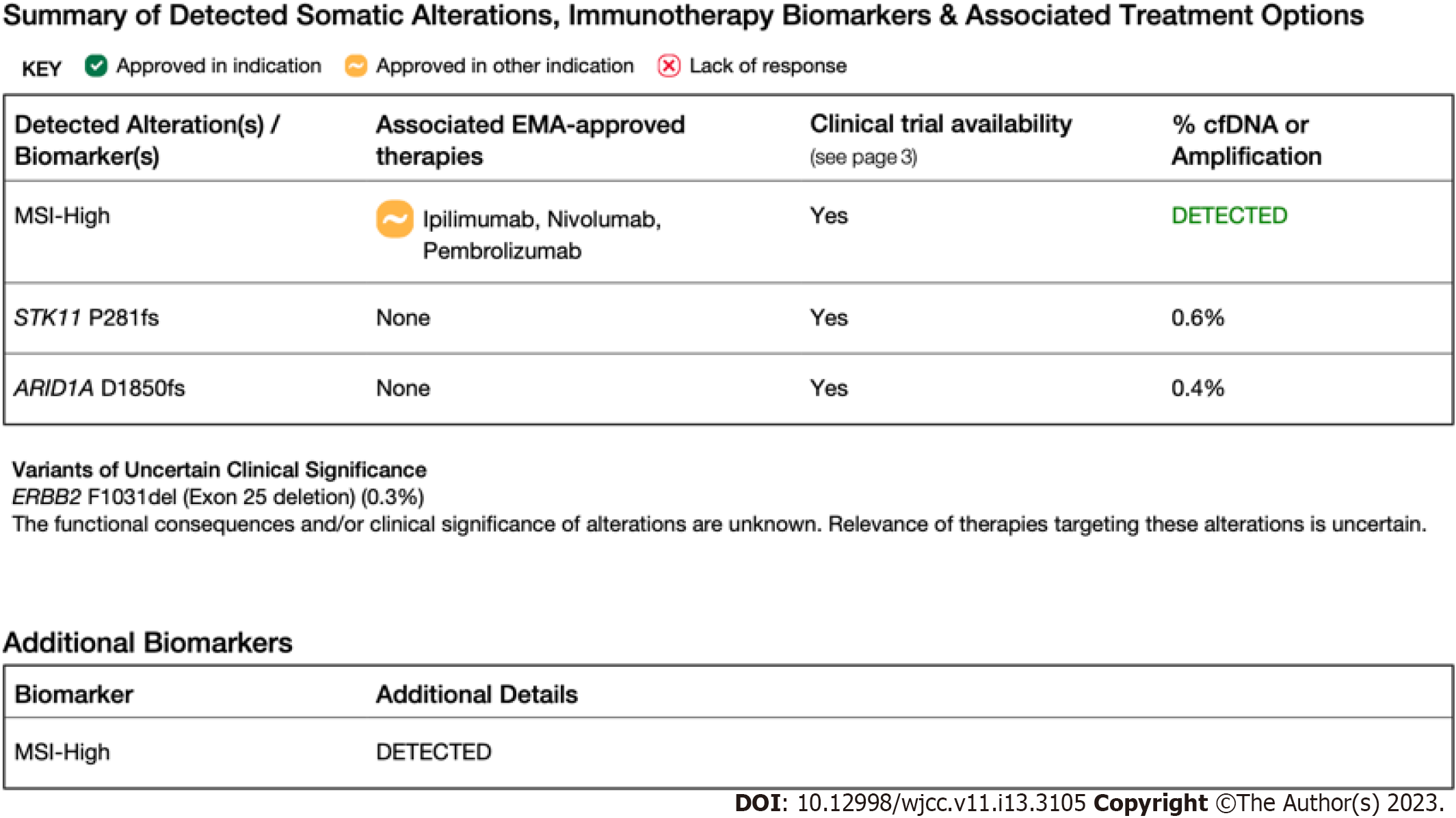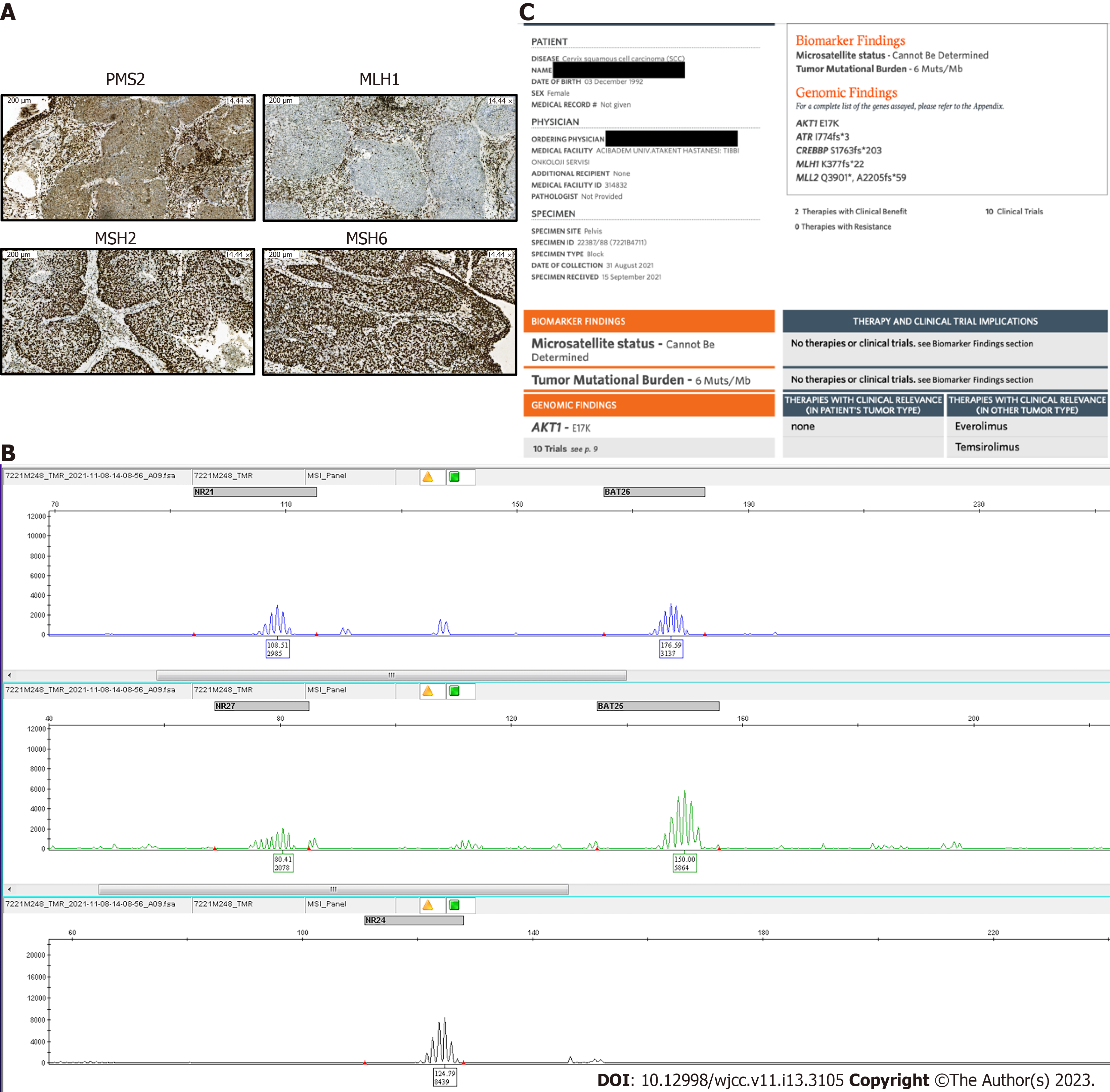Copyright
©The Author(s) 2023.
World J Clin Cases. May 6, 2023; 11(13): 3105-3113
Published online May 6, 2023. doi: 10.12998/wjcc.v11.i13.3105
Published online May 6, 2023. doi: 10.12998/wjcc.v11.i13.3105
Figure 1 Next-generation sequencing result of the cholangiocarcinoma case.
EMA: European Medicines Agency; cfDNA: Cell-free DNA; MSI: Microsatellite instability.
Figure 2 Immunohistochemistry, next-generation sequencing, and PCR results of the cervical cancer case.
A: MLH1, MSH2, MSH6 and PMS2 immunohistochemistry (× 14.44, 200 µm). Absence of MLH1 and PMS2 staining in tumor epithelium yet positive internal control staining of lymphocytes in the stroma; B: Next-generation sequencing result; and C: Suspicious instability seen in NR27 after PCR analysis.
Figure 3 Next-generation sequencing result of the case with endometrial carcinoma.
MSI: Microsatellite instability; NCCN: National Comprehensive Cancer Network.
- Citation: Şenocak Taşçı E, Yıldız İ, Erdamar S, Özer L. Discrepancy among microsatellite instability detection methodologies in non-colorectal cancer: Report of 3 cases. World J Clin Cases 2023; 11(13): 3105-3113
- URL: https://www.wjgnet.com/2307-8960/full/v11/i13/3105.htm
- DOI: https://dx.doi.org/10.12998/wjcc.v11.i13.3105















